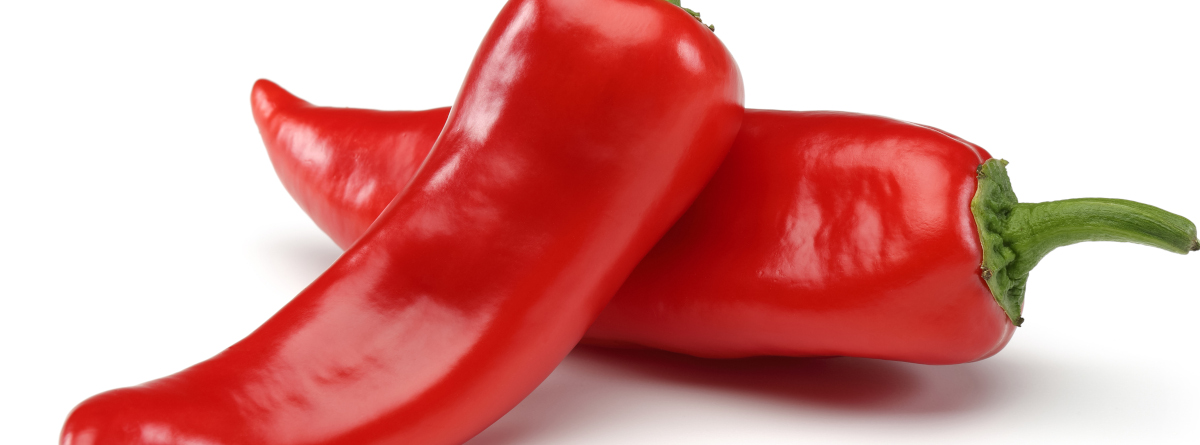
How to select
- Choose chili peppers that are firm and glossy with no blemishes.
- Look for a nice green stem and a fresh scent.
- Be sure to taste-test peppers before buying so you don't buy peppers that are too spicy.
How to prepare
- Rinse under running water.
- Remove the stem by cutting horizontally across the top of the pepper.
- Continue to make horizontal cuts down the pepper to create slices or cut the pepper in half lengthwise and then into strips.
- Remove the seeds from the core of the pepper.
How to store
- Unused peppers can be stored at room temperature or in the fridge for an extended shelf life.
- When refrigerating, store peppers in a perforated bag to avoid moisture buildup.
Peak season
Summer, fall
Ways to use
- Spice up your omelet with chili peppers.
- Add to your favorite salad dressing.
- Make salsa with chili peppers.
Fun facts
- Only mammals can feel the heat of capsicum, the thing that makes peppers spicy.
- Chili peppers have been farmed in places like Peru and Mexico for at least 6,000 years.
- The Scoville scale is used to rank the amount of spice between peppers; the hottest pepper sits at 2,200,000 SHU compared to 10,000 SHU for a jalapeno.
- Cayenne pepper can be used to seal wounds.
Nutrition facts and info
Contain antioxidants, which may help prevent cancer and heart disease. Contain capsaicin, which acts as an antioxidant (see above), and may also help prevent bacterial infections.
1 pepper = 18 calories, 4 g carbs, 0.8 g protein, 10 mg magnesium, 19 mg phosphorus, 145 mg potassium, 65 mg vitamin C
Sources
FoodData Central. Peppers, hot chili, red, raw. April 2018.
Instacart. Chili peppers – All you need to know | Instacart's guide to groceries. April 21, 2022.
Mad Mex Fresh Mexican. Seven fun facts about the chili to wow your friends with. April 22, 2022.